As luck would have it, I was able to participate in dual sweet Bordeaux tastings in the last couple of weeks. One was part of an interactive Zoom tasting and info session led by the amazing Yannick Benjamin. Shoutout to A Life Well Drunk for the invite! The other was part of my November French #Winophiles Twitter chat that happens the 3rd Saturday of each month. After really being exposed to these wines a couple of years ago from the folks at Snooth Media, I didn’t hesitate at the chance to drink and pair them again.
Now I know some of the sweet wine haters will instantly try to dismiss me but hear me out. And honestly, given the levels of sugar consumption by folks around the world (really looking at you America!) I’m always baffled when people staunchly insist that they will not drink sweet wines. I’ve hosted tastings as well as wine and food pairing events and have had people just flat out refuse to even try any of the sweet wines. Like seriously?! And I always wonder if these are the same folks that drink an over-extracted, overly fruity red wine with more residual sugar than they even know.
OK, so I’m not trying to make folks feel bad about what they like (well, maybe a little). But I do ask folks to be open-minded. Particularly if your reason for not drinking sweet wines is that you think you’ll be perceived as an unsophisticated wine drinker. Give these wines a chance as part of a savory meal, rather than dessert, and you might be pleasantly surprised.
Some Background
What is Sweet Golden Bordeaux?
Sweet Bordeaux, or “Golden Bordeaux” as some like to refer to it, refers to the sweet wines from the appellations south of the city of Bordeaux whose grapes are cultivated along the Garonne river. These wines get their sweetness from a fungus called “noble rot” or botrytis cinerea. Yes, the French even know how to make great things out of fungus!
The moist conditions along the Garonne river is ideal for the creation of botrytis. Continuous days of morning mist followed by afternoon sunshine creates the favorable humid conditions for the fungus to form. The fungus attacks the grapes which eventually causes them to dry out and shrivel up and become raisined. The resulting juice is rich and complex. And concentrated. It takes an entire vine to create a single glass of wine. These wines are also quite labor intensive to make. The entire winemaking process is manual and requires producers to make multiple passes through the vineyards and literally harvest cluster by cluster and grape by grape. Golden Bordeaux is very much a labor of love.
The Grapes
Golden Bordeaux wines are made with Semillon, Sauvignon Blanc, and Muscadelle. Semillon, with its thin-skin and tight clusters, which creates a favorable environment for botrytis, is the most critical of the three. Sauvignon Blanc provides the wines with acid backbone and freshness, while Muscadelle (which isn’t as widely used) provides floral aromatics. Typical blends feature around 80% Semillon and 20% Sauvignon Blanc.
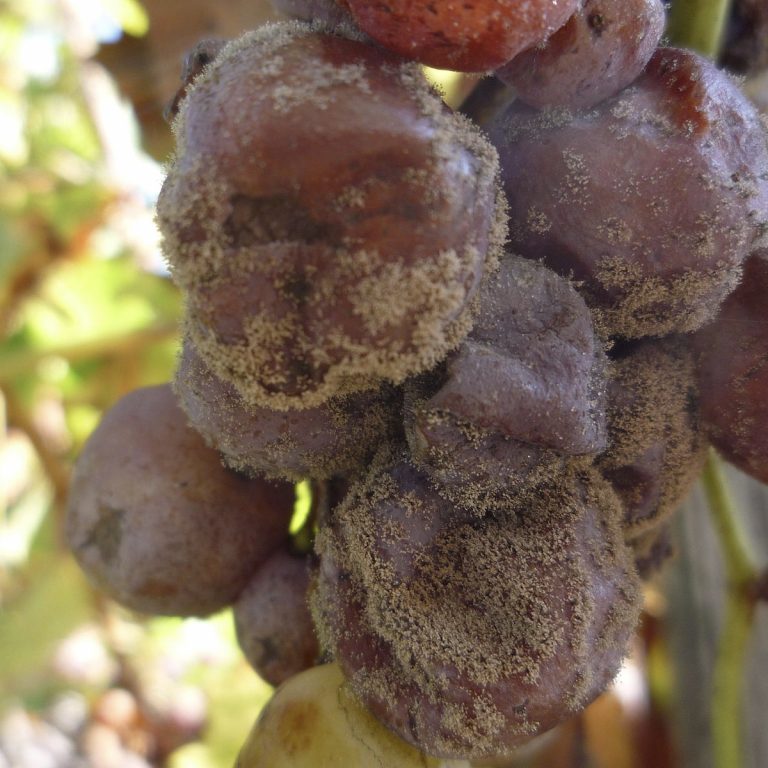
The Sweet Bordeaux Designations
When we step away from the red wines of the region and think about Bordeaux’s sweet wines, most instantly think of Sauternes or Barsac. But there is so much more to the region’s sweet wines than these two regions. Outside of Sauternes and Barsac, there are 8 sweet Bordeaux designations that are absolutely worth checking out. The wines from these regions tend to be much more affordable (most come in between $20-40) as well as offer great drinking accessibility.
Premières Côtes de Bordeaux – With clay and limestone soils, the wines from the region are fresh, floral, and fruity and tend to show their best when drunk within the first few years.
Cérons – Named after the river tributary, the wine are highly complex and tend to be more full-bodied and structured than some of the other regions. The use of new French oak preferred by many of the winemakers in the region.
Cadillac – The region has a complex soil composition of gravel and chalk which leads to wines that are sharp and angular with high levels of acidity. Additionally these are wines that can age nicely. Some of wines can rival Sauternes, but at a fraction of the price.
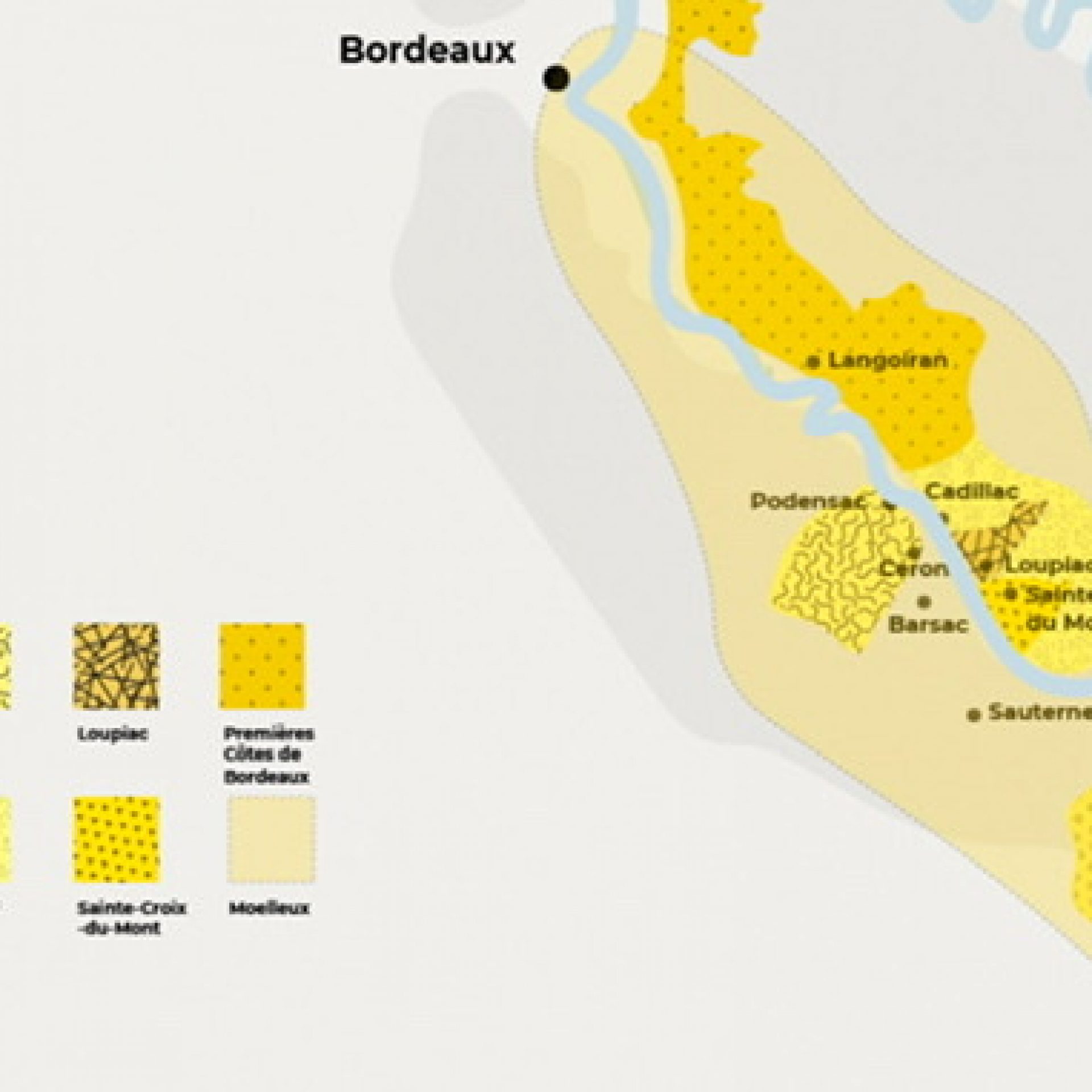
Loupiac – The wines are quite concentrated and provide some smoky and woody characteristics. The soils are similar to Cadillac, but due to its proximity to the river, there is also more sandy soil. These wines tend to be full-bodied with pronounced weight to the wines.
Sainte-Croix-du-Mont – Situated on the right bank across from Sauternes, these wines provide complexity, structure, and even power. Round and full bodied, they have great aging potential, even up to ten years.
Côtes de Bordeaux Saint-Macaire – These extremely approachable wines aren’t trying to be more than they are and beckon you to take them as they are. The wines tend to be more medium bodied than the wines from some of the other region and often provide orange blossom and mandarin characteristics.
Bordeaux Supérieur and Moelleux can come from anywhere within the larger Bordeaux appellation. Moelleux wines are sweet wines from the greater Bordeaux AOC, but as they are sweet white wines, they can forego the Bordeaux AOC designation and can instead be labeled as Bordeaux Moelleux. Moelleux is typically semi-sweet with the sweetness in the wine coming from arresting fermentation rather than botrytis.
The Mad ‘Food Pairing’ Scientist at Work
While some may relegate these wines to dessert status, the French drink them as apertifs as well as with meals. And make no mistake, these wines do have a place on the dinner table. Because these wines have acid, they are not cloyingly sweet. They are versatile pairing partners and love to be paired with cheese, salt, fat, and spice. When I was first introduced to these wines a few years ago, we were provided with a selection of savory snacks to show their versatility. I also tried the wines with spicy fried chicken and Oh. My. Gawd! It was a party in my mouth! But I wanted to take it a step further this time.
I’ve always been intrigued by the connection of the French to the state of Louisiana. I still remember the first time I visited Mr. Corkscrew’s family back in Louisiana when we first started dating. I was surprised to find family members (generally elderly) that spoke no, or very little English. Instead they spoke a local dialect of French. Français de la Louisiane aka Louisiana French is the legacy of early settlers, including the Acadians who were exiles from Nova Scotia who became known as Cajuns.
So I thought I’d pair some classic Cajun and Creole foods to see how they paired. At the end of the day, a good wine pairing is all about balance. And with their significant levels of acidity, these are natural food wines. Here’s what I paired.
2019 Château La Hargue Semi-Dry Moelleux ($15) + Cajun Spicy Fried Chicken
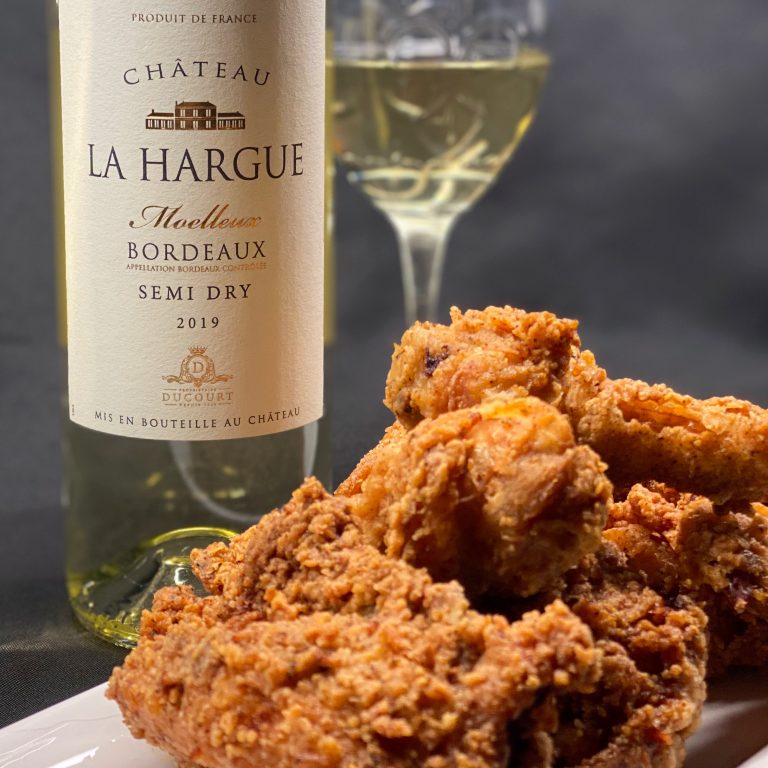
The semi-dry Moelleux was less sweet than all the other “liquoreux” wines. Instead of botrytis affected fruit, this one is made from fruit that saw extended hang time as well as the winemaker’s decision to leave a little residual sugar. And kudos to them for letting us know that it was “semi-dry” so I knew what to expect. Beautiful floral notes, baked apples, ripe peach and apricot, it is great as an aperitif, but we paired with Cajun spiced fried chicken. The wine’s acidity cut through the decadent fried chicken and the hint of sweetness was nice to tame the spice.
2016 Château La Rame, Sainte-Croix-du-Mont ($35) + Smoked Boudin
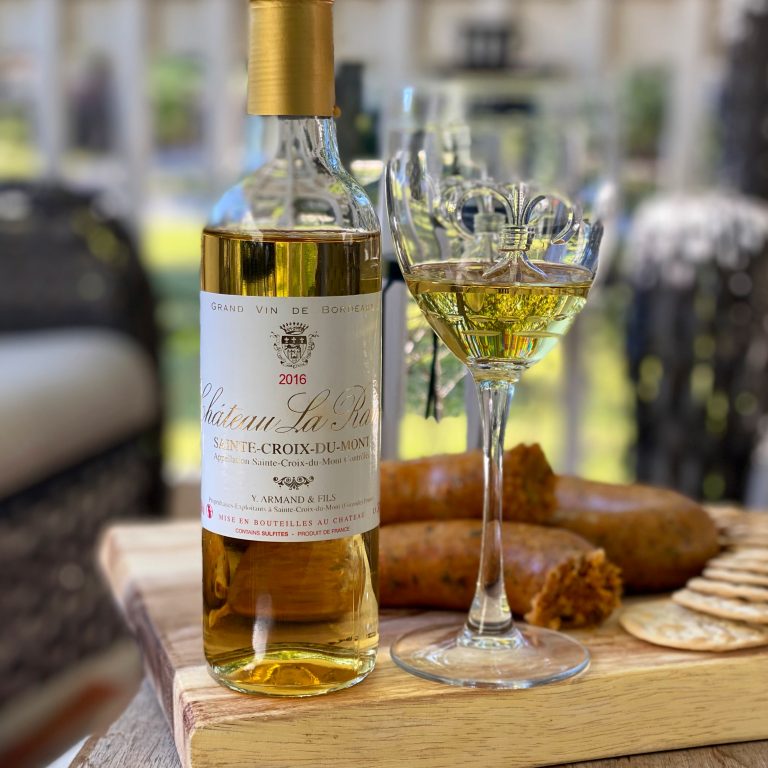
As one of the oldest properties in the region Château La Rame is also one of the most renowned. The fruit for this particular wine come from vines with an average age of 45 years. Lots of concertation and power made it a great paring with some smoked boudin. Foie gras is a classic paring with sweet Bordeaux, so I thought I’d pair the Cajun version. The Acadians bought their boudin recipes with them when they fled from eastern Canada to Louisiana. For those not in the know, boudin is rice mixed with pork, liver, and other herbs and spices and stuffed into a sausage casing. The richness of boudin reminds me of the richness of foie gras, but with a little kick. I loved this pairing. This is a wine that could be laid down in the cellar to age, but it was drinking quite nicely now.
2015 Château Dauphiné-Rondillon Cuvee, Loupiac ($42) + Shrimp Remoulade Salad
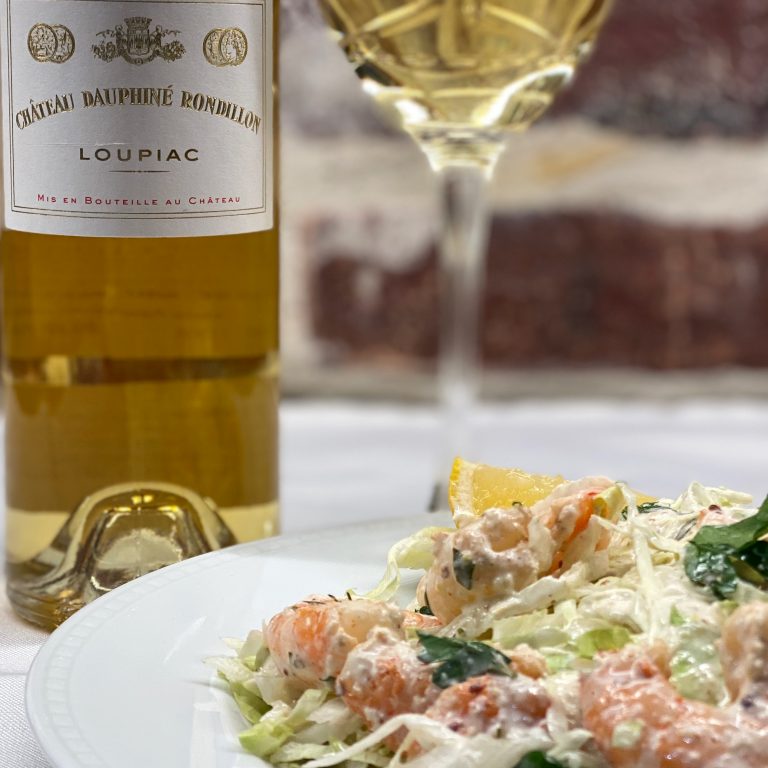
This chateau was founded in 1927 and has vines that are well over 100 years old. The wine is an 80/20 Semillon/Sauvignon Blanc blend and offers up a delicious balance of power and elegance. Cream, vanilla, honeysuckle, apricots abound as well as a slight hint of oxidation. We paired this wine with a shrimp remoulade salad. With origins in France, remoulade is everywhere in Louisiana – with their own spin of course. I’ve had it with alligator, French fries, fried pickles, and of course shrimp in New Orleans, Lafayette, and beyond. Remoulade sauce is an intense flavor and it was matched by the richness and intensity of the wine.
2016 Château Loupiac Gaudiet ($20) + Cajun Spiced Crispy Chicken & Okra
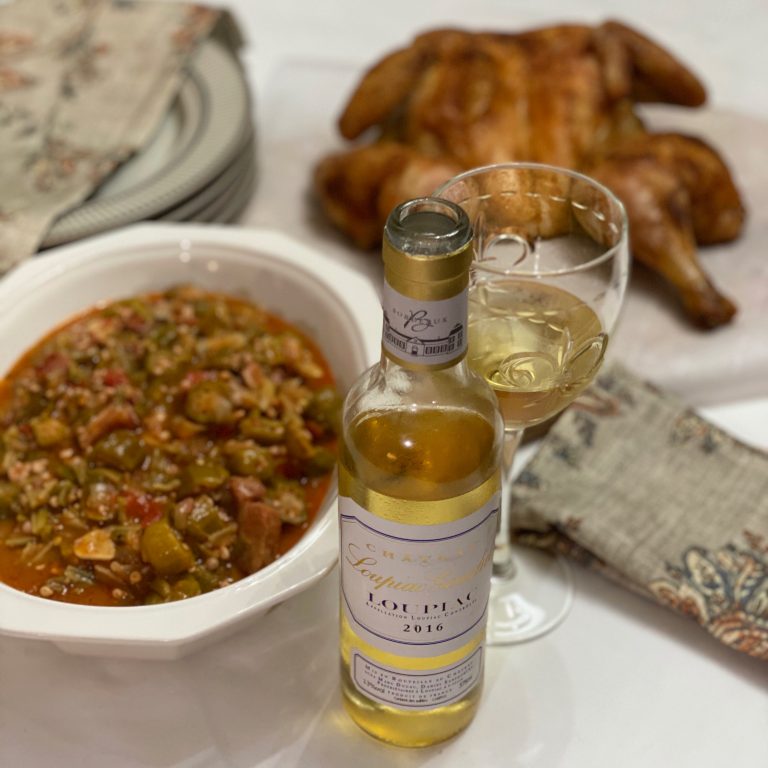
Okra is a true staple in Louisiana Creole cooking and all of my Louisiana in-laws grow okra in their gardens and routinely hook us up! We paired Creole stewed okra, tomatoes (sadly we didn’t have any of the famous Creole tomatoes), & smoked tasso and Cajun spiced spatchcock chicken with the Château Loupiac Gaudiet. The crispy, spicy, salty chicken as well as the spice of the stewed okra (we sauté fresh peppers from the garden) were tamed by the luscious apricot and honeyed characteristics of the wine. The smokiness of the tasso ham also played nicely with the wine. Every time the spice crept up, the wine acted to keep it in check. An absolute delicious balance of sweet and salty as well as sweet and spicy.
2014 Château du Cross Loupiac ($30) + Crawfish Bisque
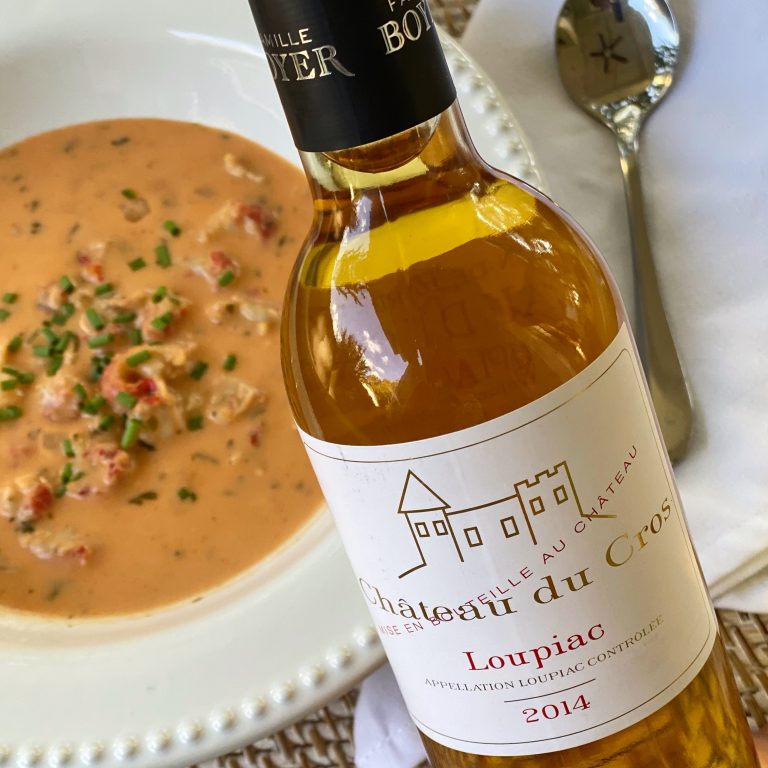
Last, but certainly not least, I had to include some crawfish. You can’t drive through the swamps of southern Louisiana and not see references to crawfish everywhere. One of my all-time favorite soups, I knew immediately that one of the dishes I’d pair would be crawfish bisque. Sweet Bordeaux pairs well with seafood so I thought the seafood stock and the crawfish would pair nicely. Dating back to 1917, Château du Cross has a long and distinguished history. This wine had pronounced acidity and given how rich and creamy the bisque was, the acidity was a welcome foil. And does it pair with crawfish etouffee? Umm, heck yeah it does!
Other Cajun and Creole dishes I didn’t get to try this time, but that would pair well with golden Bordeaux wines include Oysters Bienville which originated at Arnaud’s in New Orleans, oyster dressing which is a classic for Thanksgiving, duck gumbo, and jambalaya. Outside of Cajun and Creole, these wines also play nicely with Tex-Mex, Thai, Chinese, Indian, and even BBQ. So expand your palate and give these wines a try.
And be sure to check out what my fellow French #Winophiles are pairing with their golden Bordeaux.
- Camilla at Culinary Adventures with Camilla: “Surprise! Pairing Spicy and Savory Dishes with Sweet Bordeaux”
- Terri at Our Good Life: “Spicy Hot Tacos and Sweet Bordeaux”
- Martin at ENOFYLZ: “Pairing Golden Bordeaux with Southern Fare”
- Lauren at The Swirling Dervish: “Golden Bordeaux Meets Savory Pumpkin and Smoked Bacon Tart: a Delicious Thanksgiving Twist!”
- David at Cooking Chat: “Pairings for Sweet Bordeaux Wine”
- Payal at Keep the Peas: “Four Sweet Bordeaux Wines with Four Courses”
- Jane at Always Ravenous: “Golden Sweet Bordeaux Wines: Tasting and Pairings”
- Wendy at A Day in the Life on the Farm: “Hot Chocolate and Halva Pudding paired with Lion De Tanesse L’Amour”
- Jeff at foodwineclick: “Sweet Bordeaux Meets the Smoke”
- Jill at L’OCCASION: “Sweet Bordeaux Wines Aren’t Just for Dessert”
- Lynn at Savor the Harvest: “Sweet Bordeaux Wines Get Savory Pairings”
- Rupal at Syrah Queen: “Sweet Bordeaux Is A Sweet Delight – Savor These Perfect Food Pairings”
- Robin at Crushed Grape Chronicles: “Sweet Bordeaux Wines and pairings from opposite sides of the globe”
- Pinny at Chinese Food & Wine Pairings: “Sweet Bordeaux Paired with Asian Carbs – Chinese Sticky Rice and Korean Japchae”
- Susannah at avvinare: “Delightful Sweet Wines from Bordeaux”
- Nicole at Somm’s Table: “Château Loupiac Gaudiet with Cinnamon Apple Crème Brûlée”
- Gwendolyn at wine predator: “Successful Pairings of Salty and Savory with Sweet Semi-Dry Bordeaux”
- Jennifer at Vino Travels: “A Look into the Sweeter Side of Bordeaux Wines”
- Linda at My Full Wine Glass: “Appetizer, entrées and yes, dessert please, with sweet Bordeaux”
- Payal at Keep the Peas: “Four Sweet Bordeaux Wines With Four Courses”

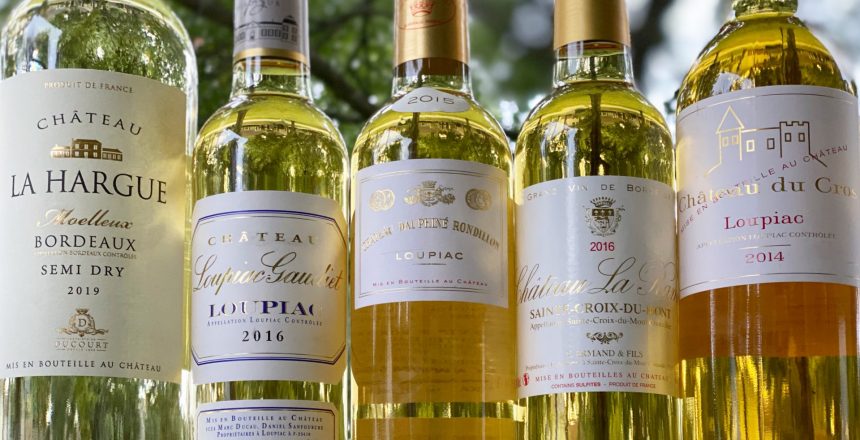
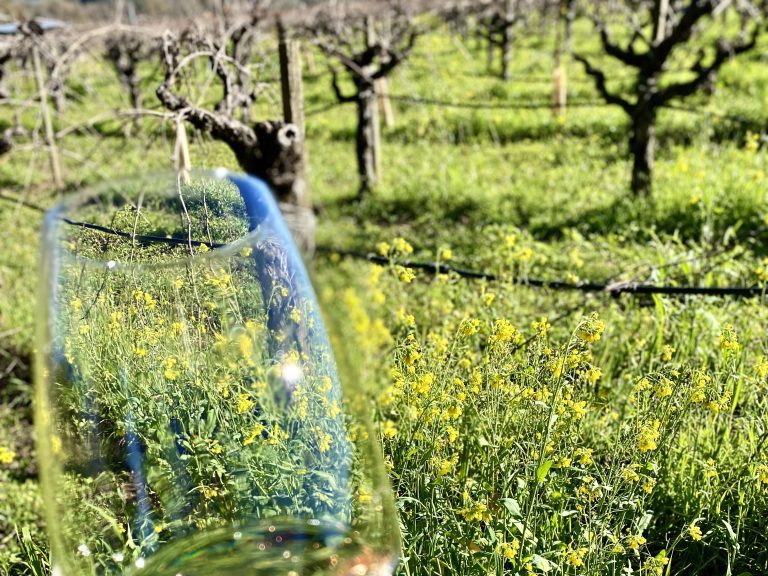
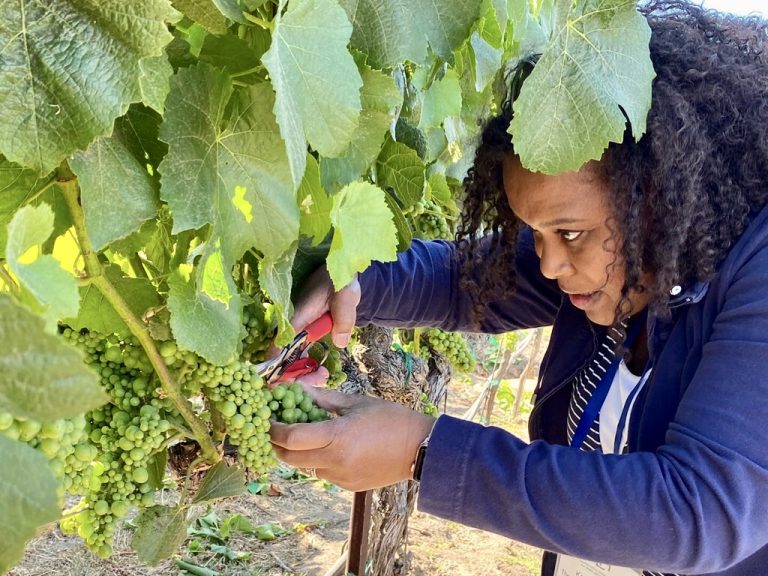


18 Comments
Lynn
•3 years ago
Ohhh, you’ve got some stellar pairings here Katrina! The boudin I can get is slightly different from the cajun version but I can see taking them out of their casings, adding the other ingredients then cooking it all up. Creativity and open mindedness, you nailed it!
Kat
•3 years ago
Absolutely! You could use it inside of bell peppers, etc.
Camilla M. Mann
•3 years ago
Oh, my goodness gracious! I love that we all mostly leaned savory for these pairings. And your Cajun-Creole matches look heavenly. I might have to try some of the leftover wine with fried chicken this weekend. Thanks for the inspiration. Wow.
Kat
•3 years ago
The chicken is definitely one of my favorite pairings.
Lauren
•3 years ago
So much to love about this post: learning how the wines are made; history of Cajun cuisine in Louisiana; and those pairings! Holy moly! You’ve offered up so much deliciousness I don’t know quite where to start. Cheers!
Kat
•3 years ago
This was such a tasty experiment!
Linda Whipple, CSW
•3 years ago
OMG, these pairings look to die for! Next time I open sweet Bordeaux, I’m definitely going Cajun and Creole. Love the cultural connections, too. Now I’m wondering how something like French-Canadian Poutin would pair with these wines.
Kat
•3 years ago
Linda, that would be an amazing combo! Love the idea!
Robin Renken
•3 years ago
I would not have thought of Louisiana cuisine with these wines, but now I can see how perfect these pairings are. The sweetness with the spiciness seems just right.
More than that, these wines seem sippable, like sweet tea in the south. They are relaxing yet refreshing with their acid and I can picture them being enjoyed on the porch or veranda on a muggy late summer day in New Orleans. They seem to have just the right personality.
Thank you for this revelation and for sharing some of your family stories.
Kat
•3 years ago
Exactly! These wines work like our beloved sweet tea.
Jane
•3 years ago
Kat you hit it out of the park with your Cajun and Creole pairings and the Sweet Bordeaux wines!!! Simply outstanding in every way. Cheers!
Kat
•3 years ago
Thanks! It was so fun pairing these wines!
Nicole Ruiz-Hudson
•3 years ago
I think it was such a brilliant idea to pair these wines with Cajun and Creole cuisines. I don’t think I would have ever thought of it, and yet, it makes perfect sense to me. All of these dishes look AMAZING!
MARTIN D REDMOND
•3 years ago
You know I’m loving these Cajun and Creole pairing with Sweet Bordeaux wines! I also love the French connection. A very informative and most delicious post Kat!